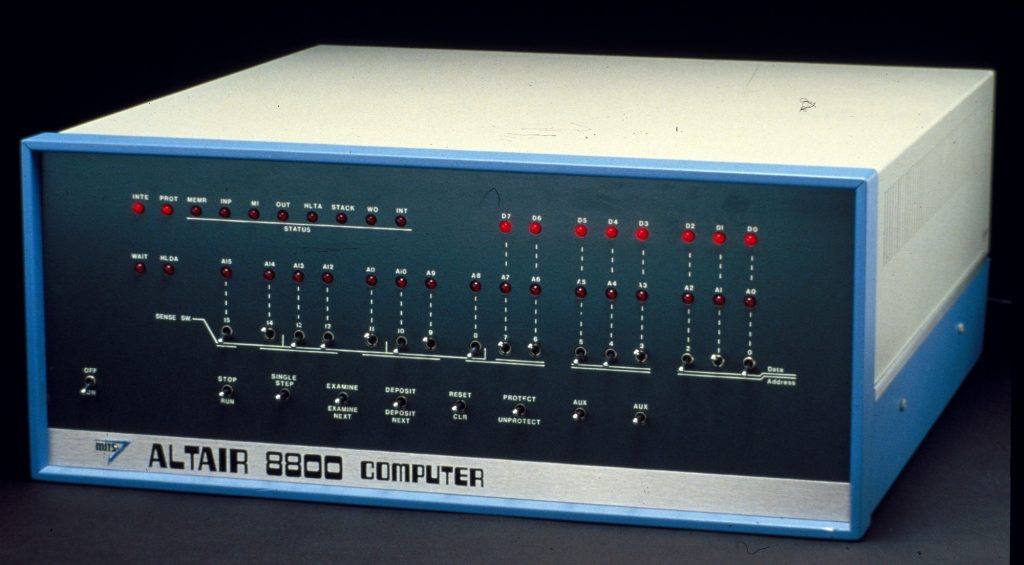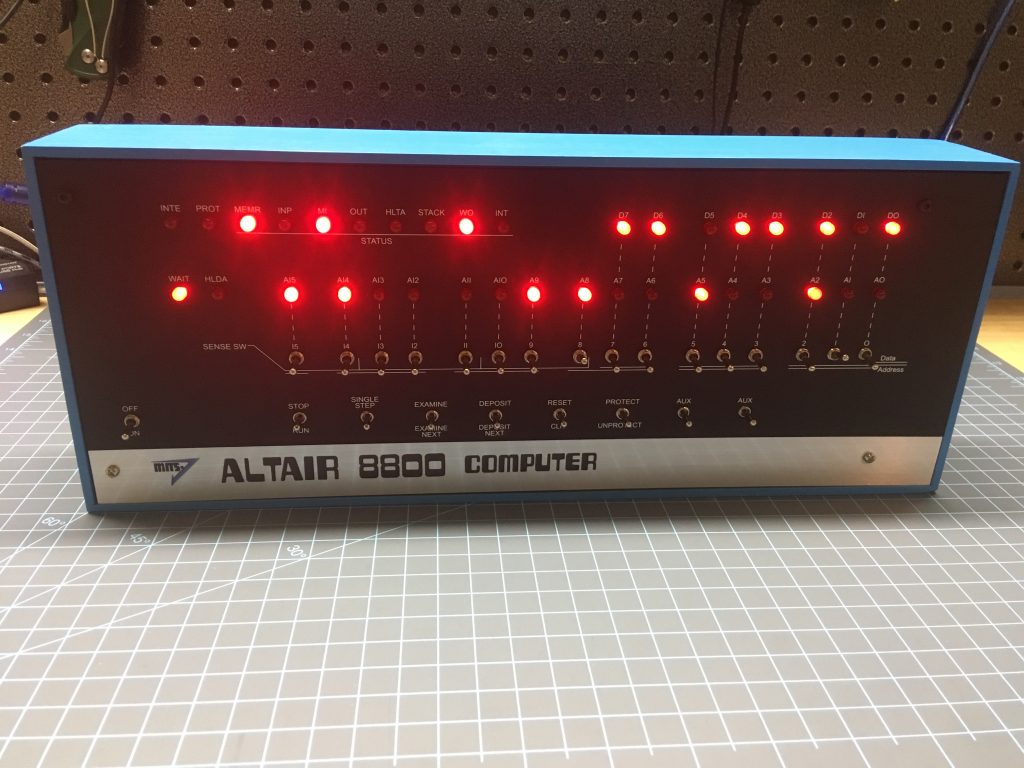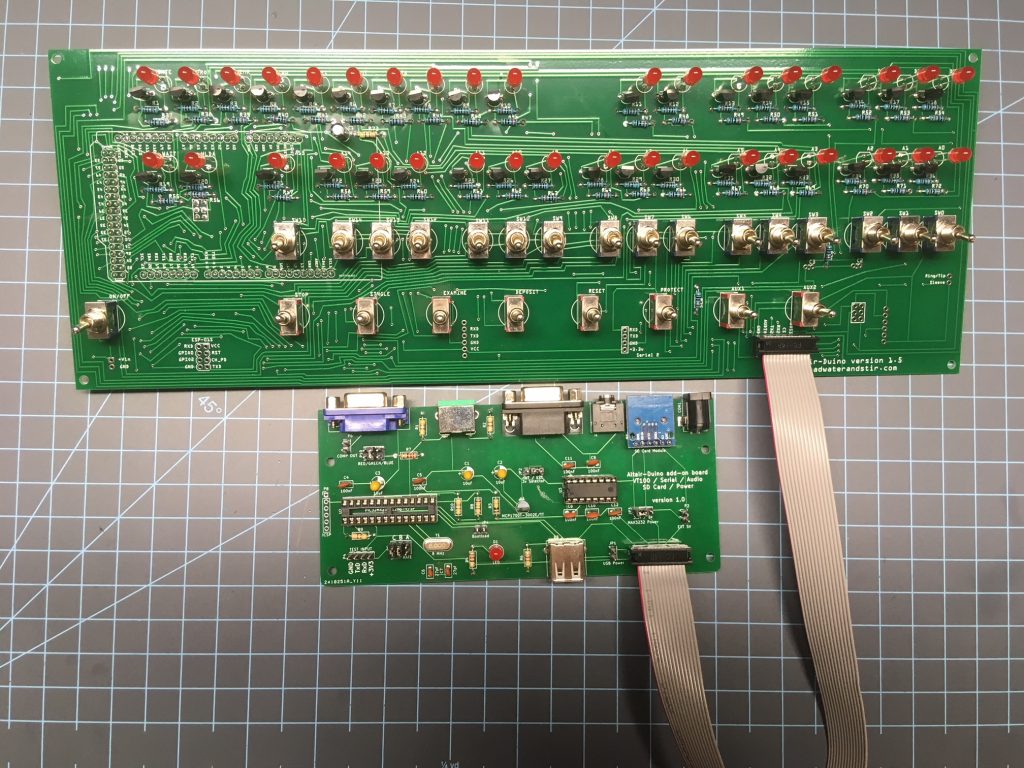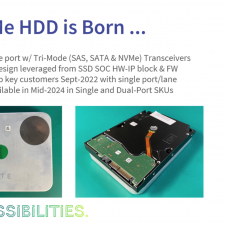Going Retro with an Altair 8800 Emulator: Introducing the Altair-Duino
This was originally intended for the September 2019 issue of Linux Journal Magazine focused around the theme of Cool Projects.
At the dawn of [microcomputing] time came the Altair 8800. This 65 pound behemoth of a computing system was essentially the very first personal microcomputer. Based on the Intel 8080 CPU, the Altair was designed and sold by MITS (Micro Instrumentation and Telemetry Systems), an electronics company from Albuquerque, New Mexico, in 1974. The original computer was sold as a build-it-yourself kit and piqued the interest of many hobbyists worldwide. Most notably, it caught the attention of a young William Gates and Paul Allen. It was the Altair that allowed both aspiring businessmen to not only build a minimal version of the BASIC programming language for the machine but to also start Microsoft.
The Altair was nothing more than a box. No display. No keyboard. Just a series of switches and LEDs fixed to its front panel. It didn’t do much of anything until hobbyists found things to do with it. They expanded on the original design and added floppy disk systems, teletypes, they wrote software, and more.

It began with an advertisement published in the January 1975 issue of Popular Mechanics. The Altair was not even available and yet, MITS was already taking more pre-orders than originally expected. The idea of having a personal computing device in one’s home stirred the imagination.
Across the United States, computer clubs established themselves for the sole purpose of bringing like minded enthusiasts together, to talk about the Altair and to show off similar designs and experiments relating to the Altair. More specifically, a Palo Alto-based Homebrew Computer Club and the Altair would later inspire a young Steven Wozniak to create the Apple I computer.
Now, history aside, why are we here? Many months ago I stumbled onto an exciting kit in which one can assemble an Altair 8800 emulator (and at a fraction of the size and weight of the original Altair). I knew I had to purchase this. I also knew that I had to reach out to the individual (Chris Davis) designing and selling these emulator kits, to learn more about the motivation behind it.

—
Petros Koutoupis: Who is Chris Davis?
Chris Davis: I am a software developer in Western Minnesota, USA. My wife and I have been married for 34 years and we have 11 children. I have been very interested in electronics and computers from a very young age. As a youth, I was obsessed with kit building and reading about computers. I could only read about them, because it was beyond my wildest fantasy to think that I could have my very own computer. As I moved into my teenage years, it looked like that might be possible – computers were becoming more affordable, but still well beyond the reach of a kid. Then in 1977 Radio Shack released the TRS-80. A Model I with Level I BASIC could be obtained for $600! Even a teenager could do that (but it still took a lot of hard work and saving!) At age 15, I was finally able to get a TRS-80.
Petros: What is the Altair-duino and what motivated you to build an Altair 8800 emulator?
Chris: Even though I never owned one, the Altair 8800 has always been important to me. It was the first computer I read about that made me believe in personal ownership of a computer. I remember reading about the Altair, the S-100 bus computers, CP/M, etc. In early 2017, I found an article on Hackster.io where David Hansel was describing an Altair 8800 simulator he had written for the Arduino Due. A few years prior I had owned a business that virtually occupied my every waking moment, leaving me no time for anything else. I had recently been recruited for my current job and closed my business. That unexpectedly gave me time to pursue my old hobbies, one of which is electronics. At the time David’s article was published, I had been working with Arduinos, and was looking for new ideas. The Altair project really intrigued me. At first I just wanted to build my own Altair simulator. And typically, when you have a circuit board produced, you must order a minimum of 5. I designed my board, sourced the parts, and went to work building my Altair. I posted on a few online forums that I had a few circuit boards leftover and if anyone else wanted to try it. The response was much greater than I had expected, with several people wanting an easier way to build the project, so I put together a kit.

Petros: What is the [historical] significance of the Altair 8800?
Chris: In the mid-1970s, we were experiencing a confluence of technologies that made the personal computer inevitable. Intel’s new 8080 processor was sufficiently powerful to make a computer that could do what people expected a computer to do. It was more than “blinking lights” – it had the potential to run higher level programming languages, use lower cost peripherals, and operate software that allowed people to be more productive. I’ve heard interviews with the late Ed Roberts (of MITS, the company behind the Altair) where he said the Altair was basically an “enhanced” version of a microprocessor trainer. In its first incarnation it really was just switches and blinking lights. But it inspired people to do more. For instance, when Bill Gates heard about the Altair from Paul Allen, it inspired him to leave Harvard, move to Albuquerque (the home of MITS) and start Microsoft. Because of the Altair’s bus (Ed called it the “Altair Bus” and was disappointed that it eventually became known as the “S100 Bus) it was possible for other people to extend the capabilities of the computer. I find it quite amazing that a small company like MITS could produce a computer as capable as the Altair on their first try. I feel there was a lot of “pent up demand” for an expandable computer that a lot of people took advantage of it when it was finally produced.
Petros: I see that you offer a complete kit so that others may replicate this phenomenal work. Why would someone want to [or should] do this? And who is the kit geared toward?
Chris: When I put the kit together, I honestly thought I might be able to sell 25 units. I had no idea that there was a world-wide community of vintage computer enthusiasts (complete with annual festivals!). I wanted to build an Altair because I wanted to recapture some of the excitement of the early days of personal computers. I also wanted to introduce my young boys to electronics design and construction (we homeschool our kids, so we’re always looking for educational experiences). I have found that I have learned so much more. I believe a greater understanding of the inner workings of computers makes me a better programmer. I also find kit building very relaxing – although that could be from breathing in all that rosin! I feel that kit building, and specifically vintage computer replicas, give us a bit of control and understanding as opposed to today’s computers that are built by robots, or at the very best, just “snapped together” by hobbyists. The kit is geared toward anyone that would enjoy electronic kit building, but I can tell you from my customer list, that it’s mostly older men that remember the dawn of personal computers, and may have built a genuine Altair back in the day. I would really like to see my kits used to expose younger people to the joy of kit building. I have another kit, a recreation of the Kenbak-1 that would be a perfect introduction to kit building for a young person.
Petros: What can I do with an assembled and functional unit?
Chris: You can do anything a fully-loaded original Altair could do. I like to call it a “cycle-accurate” emulation of the Altair. That means the Arduino emulates the 8080 CPU, and some of the basic I/O functions (serial ports, disk drives, etc.) but this can run code that ran on the original Altair that was written 40 years ago. Quite often people are posting new disk images they’ve been able to find, such as Aztec C and FORTH. My kit includes disk images for Altair DOS, Altair BASIC, Microsoft BASIC, several CP/M programs such as WordStar and Supercalc.
Petros: How can one expand on this? For instance, if I were to add a TI Silent 700 to an assembled and functional unit, would I be able to do so?
Chris: You can add up to four serial ports and connect to many devices, such as a serial terminal or teletype. However, in some cases, get ready to flex your hobbyist muscles! Because technology from that era was often proprietary. For example, I was able to connect my Altair-Duino to a TI Silent 700, but I found out there were a few different versions. The version I found on eBay did not have a “standard” serial port. Instead, I found that the logic levels were reversed. Fortunately I found an online post from another person with the same issue that had the idea of introducing an Arduino Nano into the path with some code to invert the serial signals and pass them to the Altair-Duino. It worked, and now I have a Silent 700 connected. David has continued to work on other projects that enhance and expand the Arduino simulation. He has designed a simulation of the Cromemco Dazzler, as well as the Processor Technology VDM-1 terminal. I have an open Google group for people to talk about their expansions. It’s really quite amazing to see what people do that was beyond anything I imagined when I first made this kit.
Petros: I hear that you have added additional features. What does that look like?
Chris: I’m launching two new versions of the kit. The standard version includes a “low-profile” acrylic frame that houses the kit. Prior to this, the kit was housed in a bamboo box (this was a repurposed silverware box!). The standard version is very much like my original kit, with two serial ports: a Bluetooth serial device, and a DB9 RS232 port. The pro version includes a blue and gray acrylic box that is more like the original Altair case, but smaller. It is almost 6 inches (145 mm) deep so it can still fit comfortably on a display shelf or desk. It also includes an I/O expansion board that includes a VT100 emulation with VGA output and keyboard input, a DB9 RS232 port, Micro SD card slot, audio output (that emulates the Processor Technology Music System), and a power jack.

Petros: Where can I learn more about the Altair-duino, what are my options and where may I be able to purchase one?
Chris: You can find the Altair-Duino kit as well as the Kenbak-1 kit on my website: adwaterandstir.com. I’m also working on other kits. Right now I’ve been working on an Apple I replica. I know there are several other Apple I replicas out there, but I really wanted to learn more about Steve Wozniak’s achievement, and designing my own was the best way I knew how!
Petros: What else would you like for our readers to know?
Chris: I can’t give enough credit to David Hansel, who wrote the simulation software. David’s article about the construction of an Altair replica is a fantastic piece of work. David is an excellent programmer, and like me, enjoys exposing his young children to the “magic” of electronics and early computers. I’d also like to give credit to Mike Douglas, whose Altair Clone was an inspiration to me and David, and who assembled a great collection of classic Altair software and information available on his website.
—
To learn more about this exciting project or the others mentioned by Chris Davis, visit adwaterandstir.com.
Update (August 29, 2019): Be sure to catch an interview with Chris Davis on the Reality 2.0 podcast episode 26, Retro Computing with the Altair-Duino.
![Random [Tech] Stuff](https://koutoupis.com/wp-content/uploads/2022/01/koutoupis-logo-3.png)

